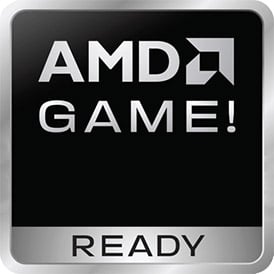
AMD Phenom II

Actual generation: 6.
Actual architecture: Thuban (K10)
Technology: 45 nm
Chip design: Unknown
Instruction set: SSE3, SSE4a
Virtualization: AMD-V
The AMD Phenom II is mainly installed in desktop computers, but there are also some mobile versions of this processor type. These processors were produced between 2009 and 2011. The processors were intended for high-end computers, e.g. for PC gamers, and had two to six CPU cores. The Hyper-Threading technology or SMT (Simultaneous Multi-Threading), which can run two threads per CPU core, was not yet supported by the AMD Phenom II processors.Actual architecture: Thuban (K10)
Technology: 45 nm
Chip design: Unknown
Instruction set: SSE3, SSE4a
Virtualization: AMD-V
With the AMD Phenom II X6 1090T, the top model of the Phenom II series had 6 CPU cores that were clocked at up to 3.6 GHz. The base frequency of the processor was 3.2 GHz. The AMD Phenom II processors support DDR2 RAM up to type 1066 (533 MHz real clock rate). The memory correction method ECC, which is used in many servers and significantly increases the data integrity of a computer, was not supported.
Memory modules can be operated in dual-channel mode, which doubles the theoretical memory bandwidth and has a positive impact on many applications, including games. Therefore, if possible, you should install at least two main memory modules in a PC in order to activate dual-channel mode.
AMD Phenom II processors have a maximum TDP of 125 watts, which is due to their older 45 nm manufacturing. The top model AMD Phenom II X6 1090T can access up to 6 MB level 3 cache and fits into the AMD AM3 socket. Virtualization functions such as AMD-V and AMD-RVI were already supported in a rudimentary manner and AMD has continued to expand them over the years.
The AMD Phenom II processors were replaced in 2011 by the AMD FX series, which was replaced again in 2016 by the current AMD Ryzen processors with a completely new architecture.
All AMD Phenom II CPUs
| Processor | Generation | ||
 |
AMD Phenom II X6 1100T 6C 6T @ 3.30 GHz |
6. | |
 |
AMD Phenom II X6 1090T 6C 6T @ 3.20 GHz |
6. | |
 |
AMD Phenom II X6 1075T 6C 6T @ 3.00 GHz |
6. | |
 |
AMD Phenom II X6 1065T 6C 6T @ 2.90 GHz |
6. | |
 |
AMD Phenom II X6 1055T 6C 6T @ 2.80 GHz |
6. | |
 |
AMD Phenom II X6 1045T 6C 6T @ 2.70 GHz |
6. | |
 |
AMD Phenom II X6 1035T 6C 6T @ 2.60 GHz |
6. | |
 |
AMD Phenom II X4 850 4C 4T @ 3.30 GHz |
5. | |
 |
AMD Phenom II X4 840 4C 4T @ 3.20 GHz |
5. | |
 |
AMD Phenom II X4 B99 4C 4T @ 3.30 GHz |
4. | |
 |
AMD Phenom II X4 B97 4C 4T @ 3.20 GHz |
4. | |
 |
AMD Phenom II X4 B95 4C 4T @ 3.00 GHz |
4. | |
 |
AMD Phenom II X4 B93 4C 4T @ 2.80 GHz |
4. | |
 |
AMD Phenom II X4 980 4C 4T @ 3.70 GHz |
4. | |
 |
AMD Phenom II X4 975 4C 4T @ 3.60 GHz |
4. | |
 |
AMD Phenom II X4 970 4C 4T @ 3.50 GHz |
4. | |
 |
AMD Phenom II X4 965 4C 4T @ 3.40 GHz |
4. | |
 |
AMD Phenom II X4 960T 4C 4T @ 3.00 GHz |
4. | |
 |
AMD Phenom II X4 955 4C 4T @ 3.20 GHz |
4. | |
 |
AMD Phenom II X4 945 4C 4T @ 3.00 GHz |
4. |
AMD Phenom II generation list
| Name | Generation | Segment | Technology | Architecture |
| AMD Phenom II - 1000 | 6. | Desktop / Server | 45 nm | Thuban (K10) |
| AMD Phenom II - 840/850 | 5. | Desktop / Server | 45 nm | Propus |
| AMD Phenom II - 800/900 | 4. | Desktop / Server | 45 nm | Deneb (K10) |
| AMD Phenom II - 700 | 3. | Desktop / Server | 45 nm | Heka (K10) |
| AMD Phenom II - 545 | 2. | Desktop / Server | 45 nm | Callisto (K10) |
| AMD Phenom II - 500 | 1. | Desktop / Server | 45 nm | Regor (K10) |
back to index



